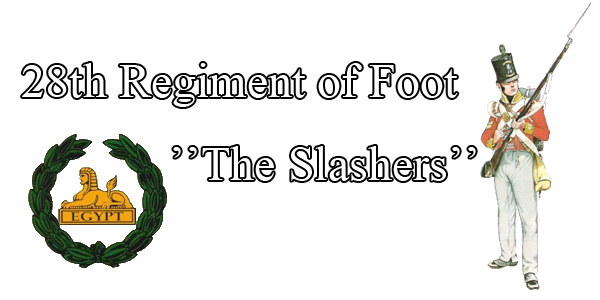About us
The 57th is a mature and disciplined regiment.
We use our accurate shooting skills and swift,
expert formations to put our foes in the ground.
This regiment has a core of skilled and well
trained members but we always need more
fresh recruits to learn the ways of Line Infantry.
We are growing rapidly and are already attending
many events! The 57th strikes fear into it's enemies,
and is highly trained in ranged and close combat
engagements. If you are looking for fun, mature
and disciplined regiment then the 57th is for you
Rules
1. Don't troll!
2. Obey the orders!
3. Play seriously when needed!
4. Respect others!
5. Have fun when you can!
6. No racism!
Joining us
If you want to join the regiment then you just
can add an officer on steam or fill in the application
below. Give an officer atleast 12 hours to accept
your application or your friend request on steam.
Officer's steam accounts:
Major Muffin
Captain Antti
Lieutenant MillWARR
 |

 | History
In 1755 a new regiment of foot was raised. Initially numbered 59th, this rose to 57th a year later when the old
50th and 51st Foot were disbanded. Some accounts suggest that it was mainly formed of Londoners from the
Middlesex Militia, though others suggest it was formed by joining recruits from Manchester, Somerset and
Gloucester with two companies from the 3rd and 20th Regiments of Foot.
The regiment’s first posting was to Gibraltar, from which it operated for a time as marines along the coast of
Spain. It was moved to Minorca in 1763 and then to Ireland five years later.
With the American Revolutionary War (1775-83) brewing, it was next deployed to North America. Most of the
regiment fought throughout the conflict, but its light company was captured at Yorktown and interned until the war’s end.
In 1782 the regiment was given a country association with West Middlesex and a year later joined the British
garrison at Halifax in Nova Scotia for eight years. It was then recalled to Europe in 1793 to fight in Flanders
during the opening campaigns of the French Revolutionary Wars. In 1796 it was sent to the West Indies,
garrisoning Trinidad for seven years.
In 1803, now back in Britain, the regiment raised a 2nd Battalion as part of the Army of Reserve.
This remained in England and Jersey until being disbanded soon after Waterloo (1815). The 1st Battalion returned to
Gibraltar for five years in 1804 and briefly returned to Britain in 1809 before being sent to Lisbon later that year.
The regiment’s 1st Battalion suffered heavily in the opening years of the Peninsular War (1808-14), most notably at
Albuera on 16 May 1811, where 88 per cent of its officers and 75 per cent of its men were killed or wounded. Its King’s
Colour sustained 30 bullet holes. Less than a month later its few remaining men were joined with survivors from the 3rd,
29th, 31st and 66th Foot to form the Provisional Battalion.
However, in August 1811 a draft of men from the 57th Foot’s 2nd Battalion arrived in Spain and was immediately used
to re-form the regiment’s 1st Battalion. This new 1st Battalion remained in the Peninsula and by May 1814 had fought
its way to Bordeaux. It was shipped from there to man the Canadian frontier in the War of 1812, only to sail back the
following year. It landed at Ghent in August 1815 and spent two years in France with the Army of Occupation.
In 1818 the regiment began six years in Ireland. It then joined convict ships at Chatham and sailed with them to
New South Wales, where the regiment remained until moving to India in 1831. That posting lasted 15 years and was followed
by seven more years in Ireland.
The regiment served throughout the Crimean War (1854-56) and left two companies behind in Aden in 1857 en
route to fighting during the Indian Mutiny (1857-59). It arrived in India in 1858 but only stayed two years this time,
immediately followed by seven years in New Zealand. From 1867 to 1873 it was back in Britain and Ireland,
at the end of which it moved to Ceylon. From there it sailed to the Zulu War in 1879, returning to Ireland later that same year.
Roster
*WIP*
|

 | Ranks
COs
Colonel
Lieutenant-Colonel
Major
Captain
Lieutenant
Ensign
NCOs
Serjeant Major
Color Serjeant
Serjeant
Corporal
Enlisted
Lance Corporal
Regular
Private
Recruit
Special
Drummer
Fifer
Kingsman
|




























